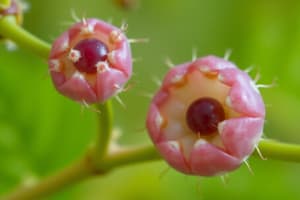Podcast
Questions and Answers
What is the primary process involved in asexual reproduction?
What is the primary process involved in asexual reproduction?
- Mitosis (correct)
- Cell differentiation
- Fertilization
- Meiosis
Which of the following statements correctly describes parthenogenesis?
Which of the following statements correctly describes parthenogenesis?
- It involves fertilization of the egg by sperm.
- It requires both male and female gametes to occur.
- It always results in female offspring.
- It can produce male offspring from unfertilized eggs. (correct)
In sexual reproduction, what forms the zygote?
In sexual reproduction, what forms the zygote?
- Two sperm cells
- A spermatocyte and an egg
- Two egg cells
- A sperm cell and an egg cell (correct)
Which reproductive strategy allows an organism to produce both sperm and eggs?
Which reproductive strategy allows an organism to produce both sperm and eggs?
What is a key characteristic of fission as a form of asexual reproduction?
What is a key characteristic of fission as a form of asexual reproduction?
How does an organism typically determine its sex during development in mammals?
How does an organism typically determine its sex during development in mammals?
Which of the following best describes the role of meiosis in sexual reproduction?
Which of the following best describes the role of meiosis in sexual reproduction?
What offspring result when a queen honeybee releases sperm during reproduction?
What offspring result when a queen honeybee releases sperm during reproduction?
What is the primary function of the epididymis in relation to sperm cells?
What is the primary function of the epididymis in relation to sperm cells?
How long must sperm cells remain in the epididymis before developing motility?
How long must sperm cells remain in the epididymis before developing motility?
Which structure carries sperm from the epididymis to the urethra during ejaculation?
Which structure carries sperm from the epididymis to the urethra during ejaculation?
What initiates the process that leads to semen delivery?
What initiates the process that leads to semen delivery?
What is the typical volume of semen ejected during ejaculation?
What is the typical volume of semen ejected during ejaculation?
Which of the following structures contains the urethra?
Which of the following structures contains the urethra?
What role does the prostate gland play in relation to sperm?
What role does the prostate gland play in relation to sperm?
What happens to the penis during an erection?
What happens to the penis during an erection?
What is the minimum sperm count per milliliter that defines male sterility?
What is the minimum sperm count per milliliter that defines male sterility?
At what stage do oocytes begin the first meiotic division in females?
At what stage do oocytes begin the first meiotic division in females?
Which hormones are responsible for signaling oocytes to resume meiosis in females at puberty?
Which hormones are responsible for signaling oocytes to resume meiosis in females at puberty?
How many oocytes are typically ovulated in a woman's lifetime from the original count at birth?
How many oocytes are typically ovulated in a woman's lifetime from the original count at birth?
Which structure transports eggs from the ovaries to the uterus?
Which structure transports eggs from the ovaries to the uterus?
What is the role of the endometrium in the female reproductive system?
What is the role of the endometrium in the female reproductive system?
What happens to oocytes that do not receive the proper developmental signal during the reproductive cycle?
What happens to oocytes that do not receive the proper developmental signal during the reproductive cycle?
Which statement is accurate regarding the development of eggs during a female's reproductive cycle?
Which statement is accurate regarding the development of eggs during a female's reproductive cycle?
What is the maximum time sperm can remain viable after fertilization?
What is the maximum time sperm can remain viable after fertilization?
What happens to the oocyte upon penetration by the first sperm?
What happens to the oocyte upon penetration by the first sperm?
Which hormones are primarily responsible for initiating the follicular phase of the menstrual cycle?
Which hormones are primarily responsible for initiating the follicular phase of the menstrual cycle?
During which phase of the menstrual cycle does an egg reach maturation and get ovulated?
During which phase of the menstrual cycle does an egg reach maturation and get ovulated?
What structure must sperm penetrate to reach the oocyte?
What structure must sperm penetrate to reach the oocyte?
What occurs to the egg after fertilization?
What occurs to the egg after fertilization?
What triggers the follicles to grow during the reproductive cycle?
What triggers the follicles to grow during the reproductive cycle?
What is the role of the smooth muscle in the fallopian tube?
What is the role of the smooth muscle in the fallopian tube?
What significant developmental change occurs at the end of the third month of pregnancy?
What significant developmental change occurs at the end of the third month of pregnancy?
During which month does the fetus begin to develop fine hair called lanugo?
During which month does the fetus begin to develop fine hair called lanugo?
What is primarily responsible for fueling the growth of the fetus during the third trimester?
What is primarily responsible for fueling the growth of the fetus during the third trimester?
What hormonal changes occur to prepare the mammary glands for milk production post-delivery?
What hormonal changes occur to prepare the mammary glands for milk production post-delivery?
What are the physiological roles of oxytocin and prostaglandins during birth?
What are the physiological roles of oxytocin and prostaglandins during birth?
What is the main function of the placenta described in the content?
What is the main function of the placenta described in the content?
What developmental stage is referred to as a fetus during pregnancy?
What developmental stage is referred to as a fetus during pregnancy?
What happens to the fetus by the end of the sixth month?
What happens to the fetus by the end of the sixth month?
What is the role of oxytocin in the breastfeeding process?
What is the role of oxytocin in the breastfeeding process?
What does allometric growth refer to in fetal development?
What does allometric growth refer to in fetal development?
Which of the following is a characteristic of gonorrhea?
Which of the following is a characteristic of gonorrhea?
What is one potential consequence of untreated chlamydia in women?
What is one potential consequence of untreated chlamydia in women?
What is a primary syndrome associated with untreated syphilis?
What is a primary syndrome associated with untreated syphilis?
Which of the following statements about genital herpes is accurate?
Which of the following statements about genital herpes is accurate?
What is one method of contraception that prevents egg maturation?
What is one method of contraception that prevents egg maturation?
Which is a common characteristic of sexually transmitted diseases?
Which is a common characteristic of sexually transmitted diseases?
Flashcards
Asexual Reproduction
Asexual Reproduction
A type of reproduction where offspring are genetically identical to the parent.
Sexual Reproduction
Sexual Reproduction
Reproduction involving the union of two gametes (sperm and egg).
Gametes
Gametes
Reproductive cells (sperm and egg) formed by meiosis.
Parthenogenesis
Parthenogenesis
Signup and view all the flashcards
Hermaphroditism
Hermaphroditism
Signup and view all the flashcards
Fission
Fission
Signup and view all the flashcards
Budding
Budding
Signup and view all the flashcards
Zygote
Zygote
Signup and view all the flashcards
Sperm Delivery Pathway
Sperm Delivery Pathway
Signup and view all the flashcards
Sperm Motility
Sperm Motility
Signup and view all the flashcards
Sperm Structure
Sperm Structure
Signup and view all the flashcards
Erection Mechanics
Erection Mechanics
Signup and view all the flashcards
Ejaculation Trigger
Ejaculation Trigger
Signup and view all the flashcards
Penis Structure
Penis Structure
Signup and view all the flashcards
Semen Composition
Semen Composition
Signup and view all the flashcards
Ejaculation Volume
Ejaculation Volume
Signup and view all the flashcards
Where does fertilization occur?
Where does fertilization occur?
Signup and view all the flashcards
What is the role of contractions in the fallopian tube?
What is the role of contractions in the fallopian tube?
Signup and view all the flashcards
How long is an egg viable?
How long is an egg viable?
Signup and view all the flashcards
How long can sperm remain viable?
How long can sperm remain viable?
Signup and view all the flashcards
What are the layers a sperm must penetrate to fertilize an egg?
What are the layers a sperm must penetrate to fertilize an egg?
Signup and view all the flashcards
What happens to the oocyte after the first sperm penetrates?
What happens to the oocyte after the first sperm penetrates?
Signup and view all the flashcards
What is a zygote?
What is a zygote?
Signup and view all the flashcards
What happens after fertilization?
What happens after fertilization?
Signup and view all the flashcards
Embryonic Stage
Embryonic Stage
Signup and view all the flashcards
Fetal Stage
Fetal Stage
Signup and view all the flashcards
Lanugo
Lanugo
Signup and view all the flashcards
Placenta
Placenta
Signup and view all the flashcards
Umbilical Cord
Umbilical Cord
Signup and view all the flashcards
Oxytocin
Oxytocin
Signup and view all the flashcards
Prostaglandins
Prostaglandins
Signup and view all the flashcards
Prolactin
Prolactin
Signup and view all the flashcards
Sperm count for fertility
Sperm count for fertility
Signup and view all the flashcards
Oocytes & location
Oocytes & location
Signup and view all the flashcards
Ovulation Definition
Ovulation Definition
Signup and view all the flashcards
Number of oocytes at birth
Number of oocytes at birth
Signup and view all the flashcards
Primary oocytes
Primary oocytes
Signup and view all the flashcards
Fallopian tubes function
Fallopian tubes function
Signup and view all the flashcards
Uterus lining
Uterus lining
Signup and view all the flashcards
Ovulation trigger
Ovulation trigger
Signup and view all the flashcards
Oxytocin's role in lactation
Oxytocin's role in lactation
Signup and view all the flashcards
Allometric growth
Allometric growth
Signup and view all the flashcards
Birth Control Methods
Birth Control Methods
Signup and view all the flashcards
Gonorrhea
Gonorrhea
Signup and view all the flashcards
Chlamydia
Chlamydia
Signup and view all the flashcards
Syphilis
Syphilis
Signup and view all the flashcards
Genital Herpes
Genital Herpes
Signup and view all the flashcards
What are the stages of childbirth?
What are the stages of childbirth?
Signup and view all the flashcards
Study Notes
Asexual and Sexual Reproduction
- Asexual reproduction creates offspring genetically identical to the parent.
- Mitosis is the cell division process involved.
- Examples include fission (one organism splitting in two) and budding (part of the parent differentiating into a new individual).
Sexual Reproduction
- Sexual reproduction forms a new individual from the union of two cells (gametes).
- Gametes are produced by meiosis in the gonads.
- The union of sperm and egg forms a zygote.
- In vertebrates, the zygote develops into a multicellular organism through mitosis.
Parthenogenesis
- A special type of reproduction where offspring arise from unfertilized eggs.
- In honeybees, a queen mates once, storing sperm.
- If no sperm is used, eggs develop into male drones.
- If sperm is used, eggs develop into female queens or workers.
Hermaphroditism
- A reproductive strategy where an individual has both testes and ovaries.
- Most hermaphroditic organisms require another individual for reproduction.
- During mating, each partner switches roles, producing both sperm and eggs.
Sex Determination in Mammals
- In mammals, sex is determined early in development.
- Human male and female reproductive systems appear similar for the first 40 days after conception.
- If the embryo is XY, it's a male, and a gene on the Y chromosome (SRY) directs gonad development into testes.
- If the embryo is XX, it's a female, and the gonads develop into ovaries.
Male Reproductive System
- Sperm is highly specialized for carrying genetic information.
- Sperm development requires a temperature 3°C cooler than body temperature, maintained in the scrotum.
- Testes contain seminiferous tubules—the sites of spermatogenesis (sperm production).
- Sperm are produced in germinal cells and mature as they migrate toward the tubule's lumen.
- After production, sperm are transferred to the epididymis, where they mature further but are not motile yet.
- Sperm mature into a head, body, and tail structure.
- They travel through the vas deferens to the urethra and exit the body during ejaculation. The penis contains two long cylinders of spongy tissue, with a third cylinder containing the urethra.
- Nerve impulses from the CNS cause arterioles to expand, allowing blood to collect and inflate the penis.
- Continued CNS stimulation is required to maintain an erection.
Semen Composition
- Semen comprises sperm and secretions from glands (e.g., prostate gland).
- Secretions provide metabolic energy for sperm.
- Some 100-400 million sperm are typically ejaculated.
- Males with significantly fewer sperm per mL are considered infertile.
Female Reproductive System
- Eggs develop from oocytes in the ovaries.
- All oocytes are present at birth.
- During each reproductive cycle, one or a few oocytes are stimulated to develop (ovulation).
- The fallopian tubes transport eggs to the uterus, a muscular organ that narrows into the cervix.
- The uterus has a lining called the endometrium that sheds during menstruation.
Ovarian Cycle
- At birth, a female has around 2 million oocytes, already starting meiosis I.
- During puberty, FSH and LH initiate meiosis resumption in some oocytes.
- Typically only a single oocyte usually matures.
- Only about 400 of the initial oocytes are ovulated in a woman's lifetime.
- The ovary and the formation of the Ovum are in stages.
Fertilization
- For fertilization, sperm must travel to the fallopian tube.
- The egg moves through the fallopian tube via muscle contractions.
- Sperm swim against the current of the contractions.
- An ovulated egg is only viable for about 24 hrs.
- Sperm can remain viable for 2-6 days.
- Sperm must penetrate protective layers (granulosa cells and zona pellucida) to reach the oocyte.
- Upon fertilization, the oocyte completes meiosis II and the egg is now a zygote.
Hormonal Coordination of Reproductive Cycle in Females
- The menstrual cycle comprises two phases: follicular and luteal.
- The follicular phase involves the growth of an egg and its release (ovulation).
- Estrogen, initially from the follicles, exhibits negative feedback on FSH and LH, ensuring only one oocyte matures.
- The luteal phase involves the corpus luteum formation, a structure that secretes progesterone.
- Progesterone prepares the uterus for pregnancy; if fertilization doesn't occur, progesterone levels fall, leading to menstruation.
- Human chorionic gonadotropin (hCG) is released by the developing embryo; maintaining the corpus luteum and halting menstruation.
Embryonic Development
-
After fertilization, the zygote undergoes rapid cell division (cleavage).
-
The blastocyst—a hollow ball of cells—forms, and implants in the uterine lining.
-
The blastocyst contains an inner cell mass (which becomes the embryo) and a trophoblast.
-
The trophoblast releases human chorionic gonadotropin (hCG).
-
Implantation initiates the formation of membranes like the amnion and chorion.
-
The chorion interacts with uterine tissue to form the placenta.
Fetal Development
- Organogenesis—the formation of body organs—starts during the fourth week of pregnancy.
- The proper course of development can be interrupted easily.
- During the fifth month, fine hair called lanugo covers the fetus.
- By the end of the sixth month, the fetus can't survive outside the uterus without medical intervention.
- The second trimester focuses primarily on growth.
- The third trimester entails rapid growth, fueled by the mother's bloodstream.
Birth Process
- Birth begins around 40 weeks from the last menstrual cycle, featuring labor and delivery.
- Oxytocin and prostaglandins stimulate uterine contractions.
- Prolactin stimulates milk production.
- Oxytocin initiates milk release.
Post-Natal Growth
- Growth continues after birth.
- Different organs exhibit different growth rates.
- Allometric growth refers to the fact that different parts of the body grow or stop growing at various times.
- Neurological development in the baby continues long after birth.
Contraception and STDs
- Contraception methods aim to prevent pregnancy without avoiding sexual intercourse.
- Common methods include abstinence, sperm blockage, sperm destruction, preventing egg maturation and preventing embryo implantation.
- Sexually transmitted diseases (STDs) spread via sexual contact.
- Examples are Gonorrhea (caused by Neisseria gonorrhoeae), Chlamydia (caused by Chlamydia trachomatis), Syphilis (caused by Treponema pallidum), and genital herpes (caused by HSV-2).
Studying That Suits You
Use AI to generate personalized quizzes and flashcards to suit your learning preferences.




